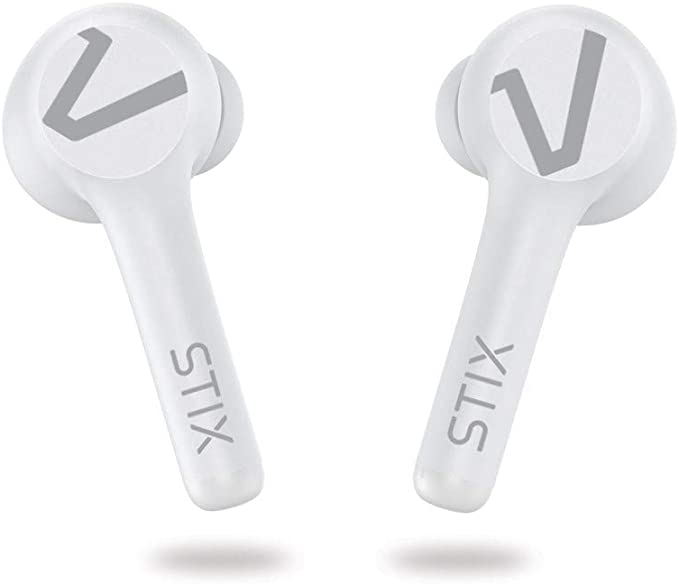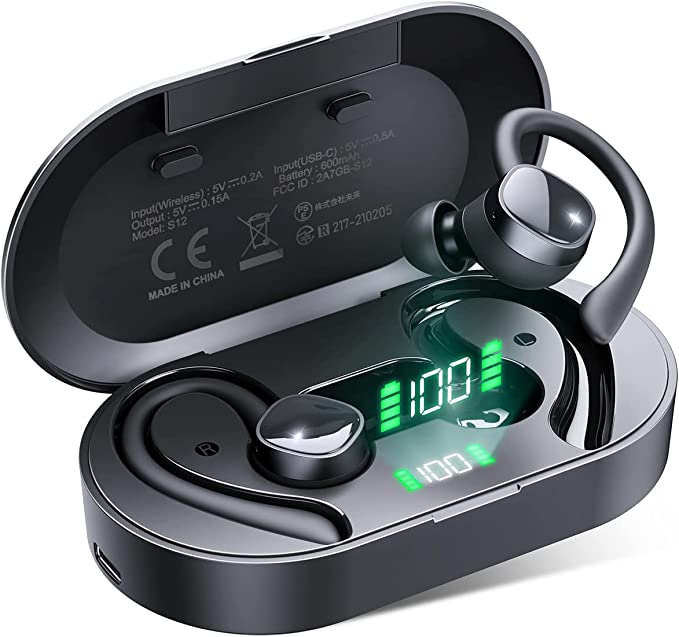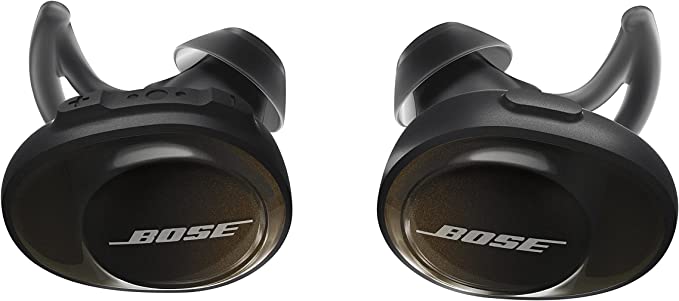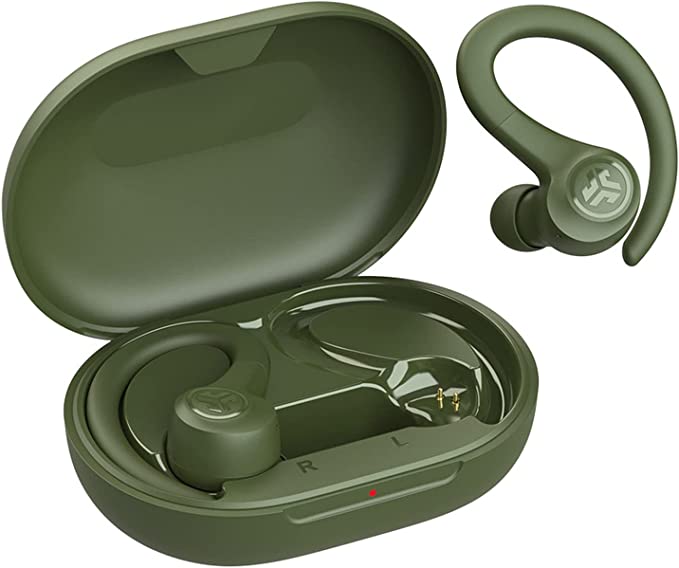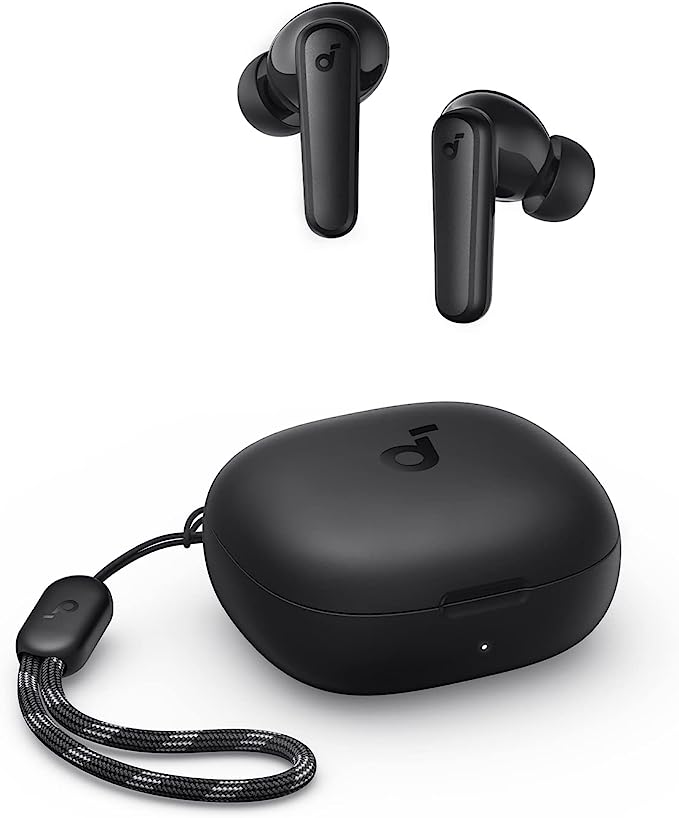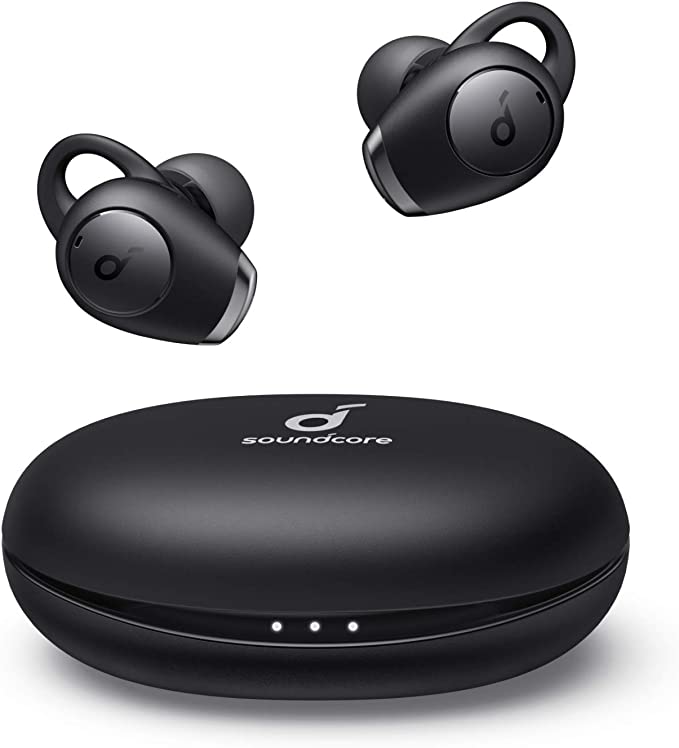Symphonized FIT True Wireless Earbuds: Stay Secure and Sweatproof on Your Runs
Update on March 8, 2025, 4 a.m.
The Jogger’s Dilemma: A Familiar Story
Imagine this: You’re halfway through your morning run, the sun is rising, your favorite song is pumping, and you’re feeling energized. Suddenly, pop – your right earbud falls out. You stop, fumble to pick it up, shove it back in, and try to regain your rhythm. Sound familiar? This frustrating scenario is all too common for runners and fitness enthusiasts who rely on music to power their workouts. But why does it happen, and what can be done to prevent it? The answer lies in a combination of physics, engineering, and a dash of clever design – all embodied in products like the Symphonized FIT True Wireless Earbuds.
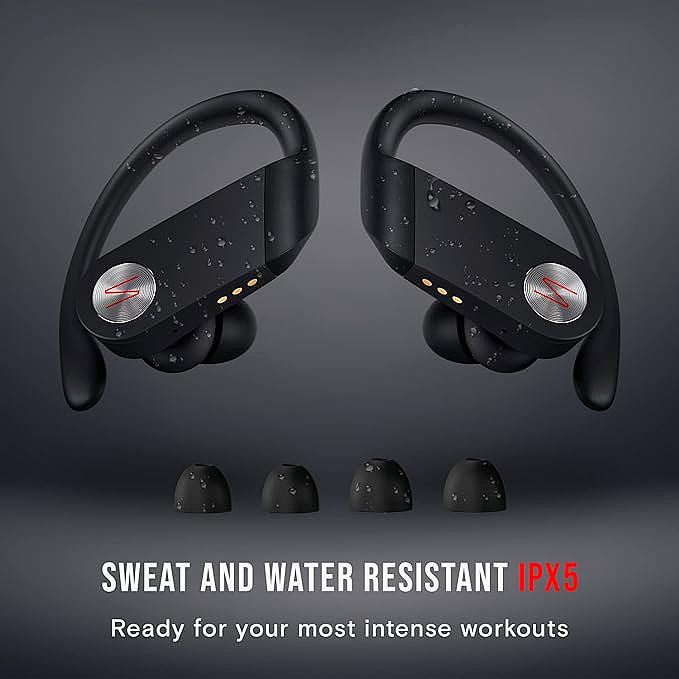
Finding the Perfect Fit: The Science of Staying Put
Let’s talk about ears. They’re surprisingly complex structures, with all sorts of curves, ridges, and folds. A standard, one-size-fits-all earbud relies primarily on friction to stay in place. That works fine when you’re sitting still, but add in the bouncing and jarring of running or other high-impact activities, and that friction often isn’t enough. Gravity and inertia are working against you!
This is where the over-ear or earhook design, like that of the Symphonized FIT, comes into play. Think of it like adding a safety harness to your earbuds. Instead of relying solely on a precarious perch inside your ear canal, the earhook wraps around the outer ear (specifically, the helix and antihelix). This provides a much more secure anchor point, distributing the weight and pressure more evenly.
The science behind this is ergonomics – the study of how people interact with products and environments. Good ergonomic design aims to maximize comfort and efficiency while minimizing the risk of discomfort or injury. In the case of earhooks, the designers have to consider several factors:
- Shape: The hook needs to conform to the general shape of the ear without being too tight or too loose.
- Material: The material needs to be flexible enough to fit different ear sizes and shapes, but also firm enough to provide support. It also needs to be comfortable against the skin, even when you’re sweating.
- Pressure Distribution: The hook shouldn’t put too much pressure on any one point, as this can cause discomfort over time. The best designs distribute the pressure evenly across a wider area.
The Symphonized FIT, with its over-ear design, aims to address these ergonomic challenges. It’s a bit like the difference between carrying a heavy backpack with just one strap versus using both straps and a waist belt – the latter distributes the load more effectively, making it more comfortable and stable.

Beyond the Wires: Decoding Bluetooth’s Magic
Now, let’s move on to the “wireless” part of “wireless earbuds.” This is where Bluetooth technology comes in. Bluetooth is a short-range wireless communication standard that allows devices to “talk” to each other without cables. But how does it actually work?
Think of it like a conversation between your phone and your earbuds, but instead of using sound waves, they use radio waves. These radio waves operate in a specific frequency band (around 2.4 GHz) that’s reserved internationally for industrial, scientific, and medical (ISM) devices. This band is chosen because it doesn’t require a license to use (in most countries) and it’s relatively free from interference from other types of radio signals.

When you pair your Symphonized FIT earbuds with your phone, they go through a process of “handshaking.” Your phone sends out a signal looking for nearby Bluetooth devices. The earbuds respond, and they establish a secure connection. This connection is then used to transmit audio data from your phone to the earbuds.
But the audio data isn’t sent directly as a raw, analog signal. Instead, it’s digitized – converted into a series of 0s and 1s. This digital data is then compressed using an algorithm called a codec. This compression reduces the amount of data that needs to be transmitted, which saves battery power and reduces the risk of dropouts. Common codecs include SBC (the basic, mandatory codec), AAC (often used by Apple devices), and aptX (known for higher quality). Unfortunately, the specific codec used by the Symphonized FIT isn’t listed in the available product information. Knowing this would give us a better idea of its potential audio quality.
The compressed data is then sent over the Bluetooth connection in small packets. The earbuds receive these packets, decompress them, and convert them back into an analog signal that can be played through the speakers (the drivers, which we’ll discuss later).
This whole process happens incredibly fast – many times per second – to create the seamless audio experience we expect. However, the stability and range of the Bluetooth connection can be affected by several factors:
- Distance: The further you are from your phone, the weaker the signal becomes.
- Obstacles: Walls, furniture, and even your body can block or interfere with the radio waves.
- Interference: Other devices using the same 2.4 GHz frequency band (like Wi-Fi routers or microwave ovens) can cause interference.
- Bluetooth Version: Newer versions of Bluetooth (like 5.0, 5.1, 5.2, and beyond) generally offer better range, stability, and power efficiency than older versions. Again, the specific Bluetooth version used by the Symphonized FIT is not listed, which is a key piece of missing information.

Sweat the Details: Understanding Water Resistance in Earbuds
Let’s face it: if you’re using earbuds for workouts, you’re going to sweat. And sweat, being mostly water and salt, is not good for electronics. That’s why water resistance is a crucial feature for sport earbuds.
Water resistance is typically measured using the IP (Ingress Protection) rating system. This system, defined by international standards, uses a two-digit code to indicate the level of protection against solids (like dust) and liquids (like water). The first digit refers to solid particle protection, and the second digit refers to liquid protection.
For sport earbuds, we’re primarily concerned with the second digit, which is often represented as “IPX” followed by a number. Here’s a quick rundown of the most common IPX ratings:
- IPX0: No protection.
- IPX1: Protected against vertically falling water drops.
- IPX2: Protected against vertically falling water drops when tilted up to 15 degrees.
- IPX3: Protected against spraying water at an angle up to 60 degrees.
- IPX4: Protected against splashing water from any direction.
- IPX5: Protected against water jets from any direction.
- IPX6: Protected against powerful water jets from any direction.
- IPX7: Protected against immersion in water up to 1 meter for 30 minutes.
- IPX8: Protected against immersion in water beyond 1 meter (specific depth and duration defined by the manufacturer).
The product description for the Symphonized FIT states that they are “water-resistant.” This, however, is not a precise term. It’s highly probable, given their intended use for sports, that they offer at least IPX4 protection, making them resistant to sweat and light rain. It would be reasonable to speculate that they might even be IPX5, offering protection against sweat and the possibility of rinsing them off. However, without explicit confirmation from the manufacturer, we cannot definitively state their IP rating. This highlights a crucial point: always look for the specific IPX rating when choosing sport earbuds, as “water-resistant” can be a vague and potentially misleading term.
Sound Science:Breaking down elements
At its core, any set of headphones, including the Symphonized FIT, is about converting electrical signals into sound waves that your ears can perceive. This process relies on a key component: the driver.
Think of the driver as a tiny loudspeaker inside each earbud. It’s responsible for taking the electrical audio signal (which has been transmitted wirelessly via Bluetooth, as we discussed earlier) and transforming it into vibrations in the air. These vibrations are what we perceive as sound.
There are several different types of drivers used in headphones, each with its own strengths and weaknesses:
- Dynamic Drivers: These are the most common type. They use a diaphragm (a thin, flexible membrane) attached to a voice coil. When an electrical current passes through the voice coil, it creates a magnetic field that interacts with a permanent magnet. This interaction causes the diaphragm to vibrate, producing sound waves. Dynamic drivers are generally known for their ability to produce strong bass and good overall sound quality at a relatively low cost.
- Balanced Armature Drivers: These are smaller and more efficient than dynamic drivers, making them popular in in-ear monitors (IEMs) and some wireless earbuds. They use a tiny, reed-like armature that vibrates within a magnetic field. Balanced armature drivers are often praised for their clarity and detail, particularly in the mid and high frequencies. However, they can sometimes struggle to produce deep bass.
- Planar Magnetic Drivers: These are less common, especially in wireless earbuds, due to their size and power requirements. They use a flat diaphragm with a printed voice coil suspended between two magnets. Planar magnetic drivers are known for their accuracy, low distortion, and excellent transient response (the ability to quickly start and stop vibrating).
The product information for the Symphonized FIT does not specify the type of driver used. This makes it difficult to comment definitively on their potential sound quality. However, given their price point and intended use, it’s likely that they use dynamic drivers.
Beyond the driver, the tuning of the headphones also plays a significant role in their sound signature. Tuning refers to the adjustments made to the frequency response of the headphones – how much emphasis is placed on different parts of the sound spectrum (bass, midrange, treble). Some headphones are tuned for a “flat” response, aiming for accuracy and neutrality. Others are tuned to emphasize bass, which can be popular for workouts.

The Future is Wireless (and Smart): What’s Next for Sport Earbuds?
The Symphonized FIT represents a snapshot of current wireless earbud technology, but the field is constantly evolving. Here are some of the trends we can expect to see in the future:
- Improved Bluetooth Connectivity: Newer versions of Bluetooth will continue to offer better range, stability, and power efficiency. We might also see wider adoption of technologies that allow simultaneous connection to multiple devices.
- Enhanced Audio Quality: Advances in codec technology and driver design will lead to even better sound quality in wireless earbuds.
- Active Noise Cancellation (ANC): ANC, which uses microphones and clever signal processing to cancel out external noise, is becoming increasingly common in wireless earbuds, even in sport models.
- Transparency Mode: This is the opposite of ANC – it allows you to hear your surroundings while still listening to music, which is important for safety during outdoor activities.
- Biometric Sensors: Some earbuds are starting to incorporate sensors that can track heart rate, body temperature, and other fitness metrics.
- AI Integration: Artificial intelligence could be used to personalize audio settings, optimize noise cancellation, and even provide real-time coaching during workouts.
- Sustainable Materials: As consumers become more environmentally conscious, we’re likely to see more earbuds made from recycled or sustainable materials.
While the Symphonized FIT is currently unavailable, the trends outlined above give you a good idea of what to look for when choosing your next pair of sport earbuds. The world of wireless audio is constantly evolving, offering ever-improving performance, features, and convenience for active individuals.
